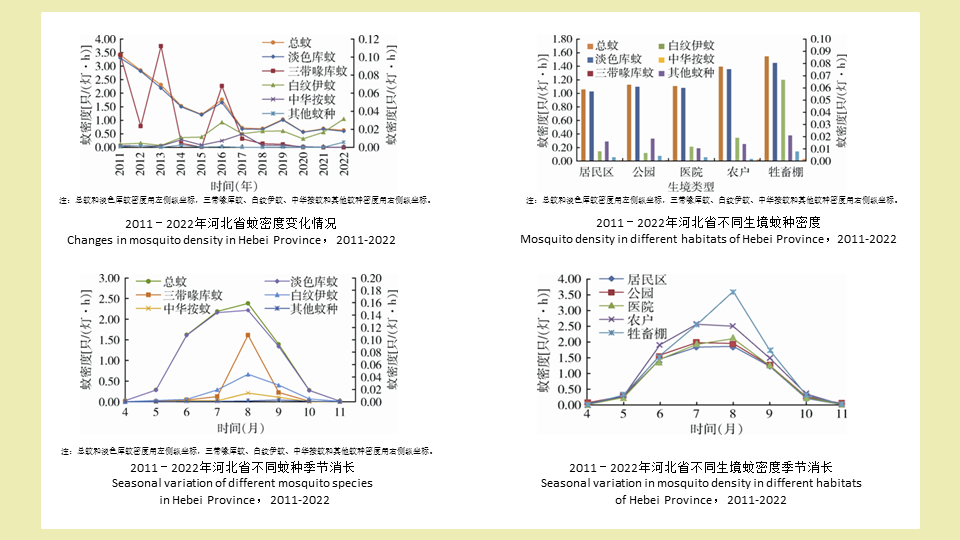 PDF(1125 KB)
PDF(1125 KB)


河北省2011-2022年成蚊生态学监测结果分析
马丽华, 韩晓莉, 高文, 王喜明, 赵勇, 宋纪文
中国媒介生物学及控制杂志 ›› 2023, Vol. 34 ›› Issue (4) : 508-512, 547.
 PDF(1125 KB)
PDF(1125 KB)
 PDF(1125 KB)
PDF(1125 KB)
河北省2011-2022年成蚊生态学监测结果分析
 ({{custom_author.role_cn}}), {{javascript:window.custom_author_cn_index++;}}
({{custom_author.role_cn}}), {{javascript:window.custom_author_cn_index++;}}An analysis of adult mosquito ecological surveillance results in Hebei Province, China, 2011-2022
 ({{custom_author.role_en}}), {{javascript:window.custom_author_en_index++;}}
({{custom_author.role_en}}), {{javascript:window.custom_author_en_index++;}}
| {{custom_ref.label}} |
{{custom_citation.content}}
{{custom_citation.annotation}}
|
/
| 〈 |
|
〉 |